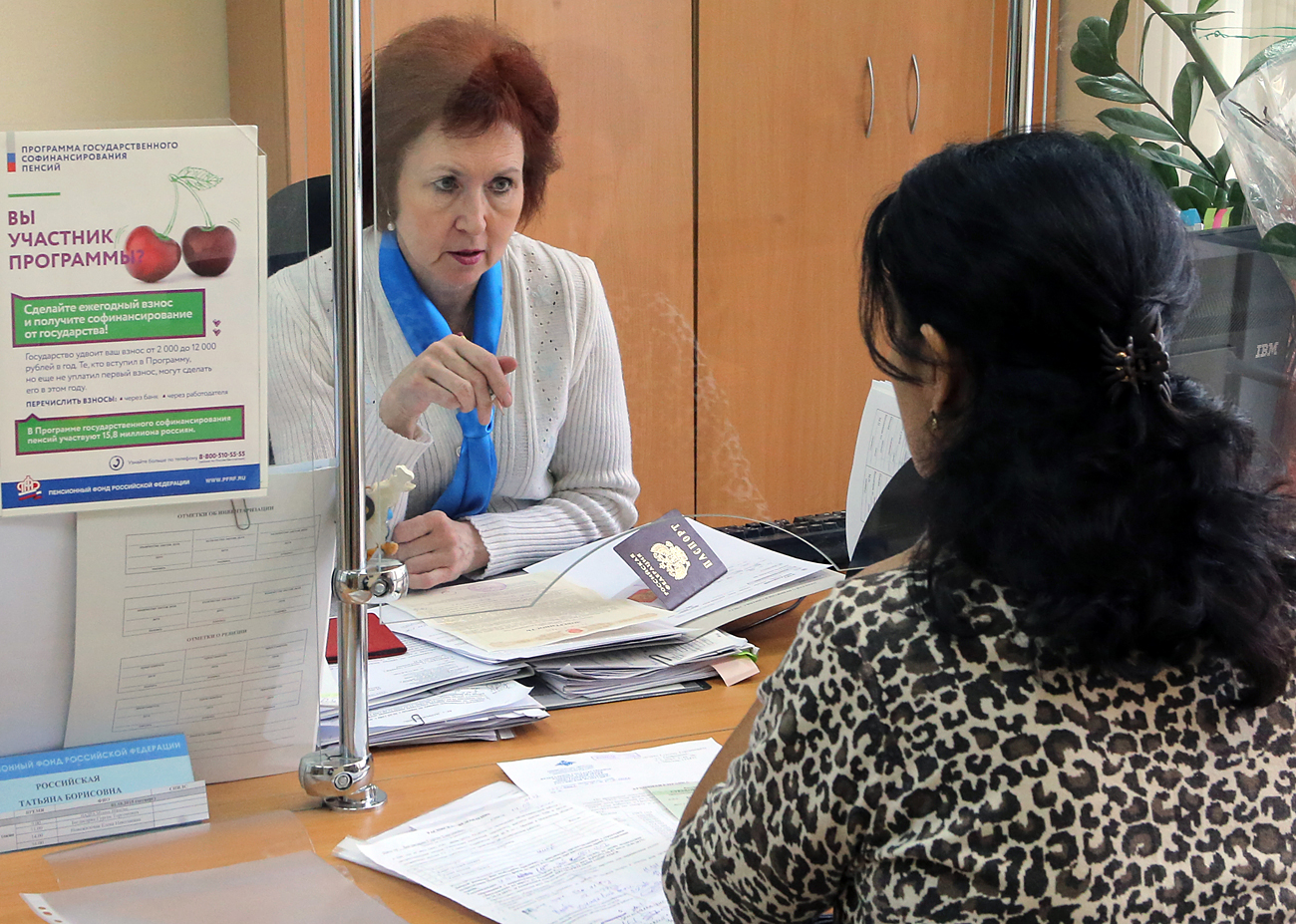
The Central Bank hopes that the proposal will make it possible to improve pension funds’ return performance. Photo: An employee serves a patron in the Pension Fund's Main Directorate in Moscow, Russia.
Vitaliy Belousov/RIA NovostiThe Russian Central Bank has proposed allowing non-state pension funds to invest their clients’ money in venture projects, the regulator has announced on its website.
The Central Bank explained that the move concerns Russian shares trading in the innovation and investment segment, with the new rules proposed to come into effect starting from July 2018. The regulator stressed that the idea is to invest pension savings into fast-growing high-tech companies.
The Russian Central Bank’s proposal largely runs counter to established international practice, says Georgy Vashchenko, head of Russia operations for the Freedom Finance investment company.
“In international practice, it is postulated that pension funds are the most long-term and conservative investors. Their money can be invested only in the most reliable instruments,” he said.
However, Timur Nigmatullin, an analyst for Moscow investment company Finam, points out that it is proposed to invest pension savings not in the venture market but in the high-tech sector, in shares of publicly traded companies. “It is a global practice and there are not that many risks associated with this,” he said.
The Central Bank hopes that the proposal will make it possible to improve pension funds’ return performance. At the same time, the regulator promises to set tough requirements for the companies that may receive pensioners’ money.
Their capitalization must be at least 6 billion rubles ($92.5 million) and they must publish their financial statements in accordance with the International Financial Reporting Standards and have at least two independent directors, while the company’s free float must be over 10 percent of its capital.
According to the RBK daily (in Russian), there are currently 26 venture companies that meet these requirements. According to the stock exchange, since the start of 2016, trading in their shares has exceeded 45.5 billion rubles ($702 million) and trading in bonds 81 billion rubles ($1.3 billion), while their total capitalization is over 264.7 billion rubles. ($4 billion).
“An opportunity to invest in the innovation segment, of course, expands the range of products offered by pension funds. However, at the same time, it complicates the process,” said Anastasia Ignatenko, an analyst with the Moscow-based broker TeleTrade. She points out that in Russia this segment is still in its infancy, enjoys little popularity with investors and is considered highly risky, although potentially lucrative.
One positive effect of the Central Bank’s initiative, experts say, is that the volume of pension savings on deposit accounts will decrease.
“A reduction in deposit investment in funds’ portfolio even from 40 down to 25 percent will spur the development of the domestic financial market,” said Timur Nigmatullin, an analyst with Moscow investment company Finam.
On the other hand, he added, unit holders in pension funds will benefit too since with the declining inflation and interest rates in Russia, interest rates on deposits will steadily fall as well, speeding up the rise in asset value on the equity and bond markets.
Much will depend on the regulations specifying the share of assets that pension funds will be allowed to invest in risky instruments, said Sergei Khestanov, a macroeconomics adviser to the managing director of Moscow brokerage firm Otkrytie Broker.
If this share is under 10 percent, he said, this move can only be welcomed as it will not heighten the risks considerably but will make it possible to boost potential yields significantly. However, he added, setting the share above 10 percent will make the risk of losses simply dangerous.
All rights reserved by Rossiyskaya Gazeta.
Subscribe
to our newsletter!
Get the week's best stories straight to your inbox